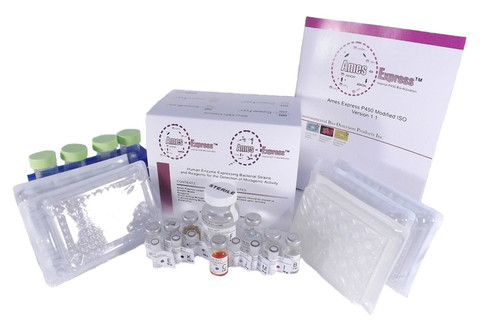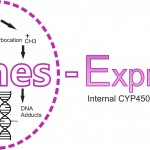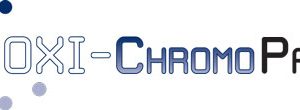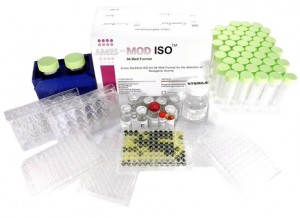Ames Express – CYP 2E1
This enzyme preforms important oxidation activation reactions on a number of haloalkanes and some PAHs, but is more importantly involved as the primary activator for a family of molecules called nitrosamines. Nitrosamines are important carcinogens formed from a variety of processes including the acid catalyzed combination of nitrite and amines as well as a byproduct from disinfection of drinking water sources by UV light. Many nitrosamines are found in foodstuffs as well as meat and cheese products preserved with nitrites. As nitrosamines are bioactivated to form a reactive carbocation capable of alkylating sites in DNA, the bacterial strain containing the 2E1 enzyme is derived from the YG7108 strain which is deficient in methyltransferase activity. This makes the 2E1 ideal for sensitive and selective detection of nitrosamine contamination in water samples and food preparations.
EBPI Ames Express bacterial strain expression of P450 2E1
EBP87 Base-Pair P450 2E1. P450 Reductase, OAT
Educational Applications
Click here to learn more the role of the Ames ExpressTM Strains for educational use.
Medical Toxicology Applications
Click here to learn more the role of the P450’s in metabolizing of drug compounds
Another advantage with the recombinant P450 1A1 and NADPH-P450 reductase expression system is that the reactive metabolites will be generated inside the cell rather than outside the cell, as is seen with the S9 rat liver mix. As a result, this mode of bioactivation will allow short half-life reactive mutagens enough time to reach DNA sites allowing for an increase in sensitivity to mutagenesis.
The recombinant P450 protein also serves as a cost effective and animal friendly alternative to the S9 rat liver extract mix which is the current bioactivation standard.
Metabolically Activates Carcinogens:
The Ames ExpressTM System:
This system acts as an in vitro mimic involving the uptake and breakdown of xenobiotic compounds by a mammal and its liver enzymes, resulting in the generation of mutagenic products inside the living system. The recombinant P450 2E1 protein also serves as a cost effective and animal friendly alternative to the S9 rat liver extract mix which is the current bio-activation standard . Like EBPI`s GST expressing strains, the recombinant P450 2E1 reductase expression system is that the reactive metabolites will be generated inside the cell rather than outside the cell. As a result, this mode of bioactivation will allow short half-life reactive mutagens enough time to reach DNA sites allowing for an increase in sensitivity to mutagenesis.
P450 2E1 is a Phase 1 enzyme found primarily in the hepatic tissue and is responsible for metabolizing polyaromatic hydrocarbons (PAHs), aromatic amines and nitro aromatics. It performs a variety of chemical reactions on several different xenobiotic classes and is a key contributor to the mechanistic mutagenicity of well known carcinogens like benzo(a)pyrene (B[a]P), PhIP and 4-aminobiphenyl.
Click Here for information on GST T1-1 Ames Express Bacterial Strains.
Potential Applciations:
- Testing of pharmaceuticals for mutagenic activity
- Testing of industrial effluents for presence of possible mutagenic compounds
- Screening of municipal discharges for possible routine presence or spills of mutagenic compounds
- Screening of surface and/or groundwater for mutagenic residues
- Screening of potable water supplies for the presence of chemicals with mutagenic potential
- Screening of water soluble air pollutants for mutagenic agents
- Evaluation of pure or complexed raw mixtures for potential mutagenicity
- A convenient and easy to use teaching tool for university and college laboratorie








